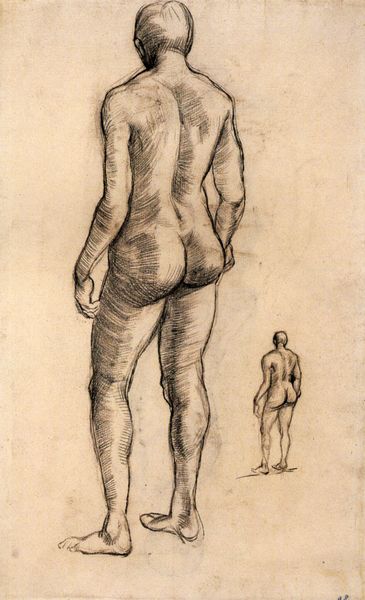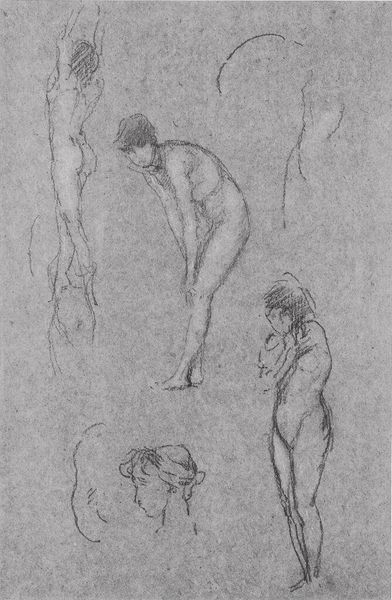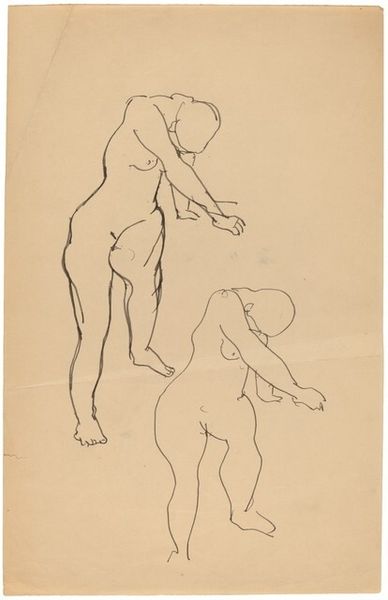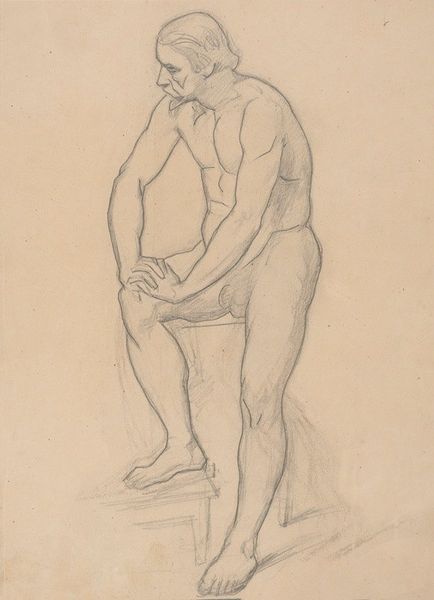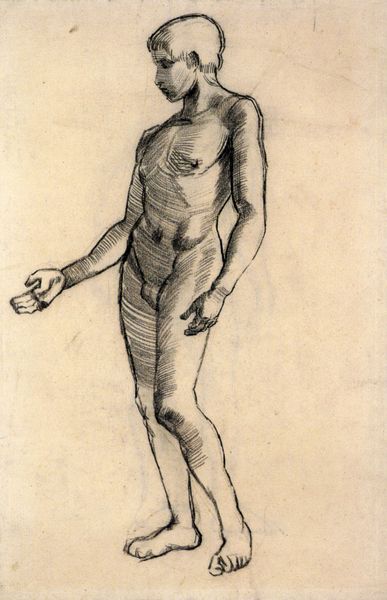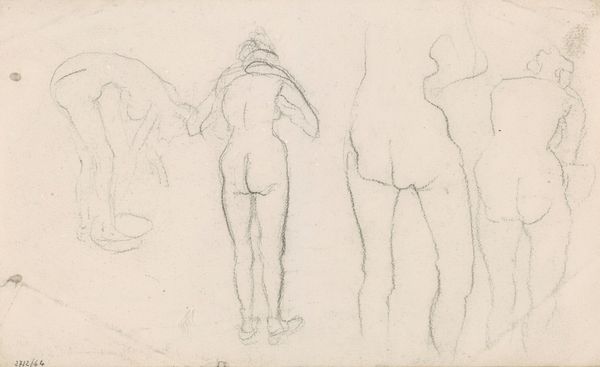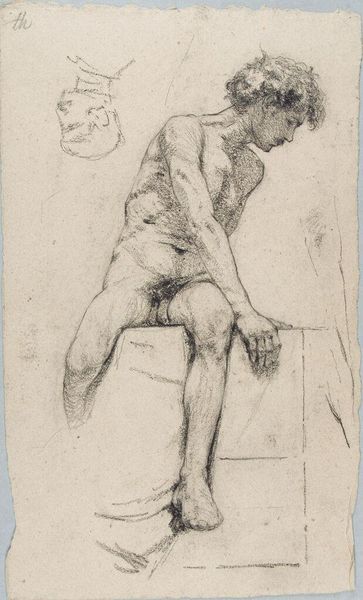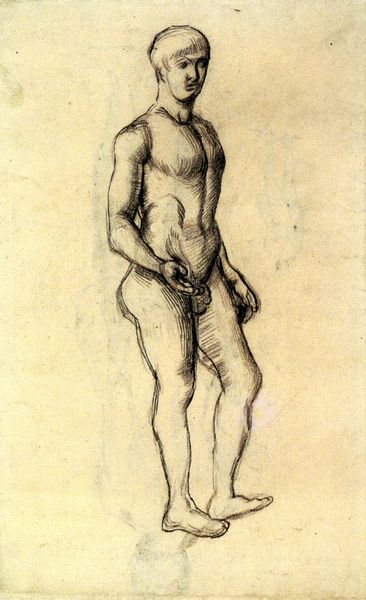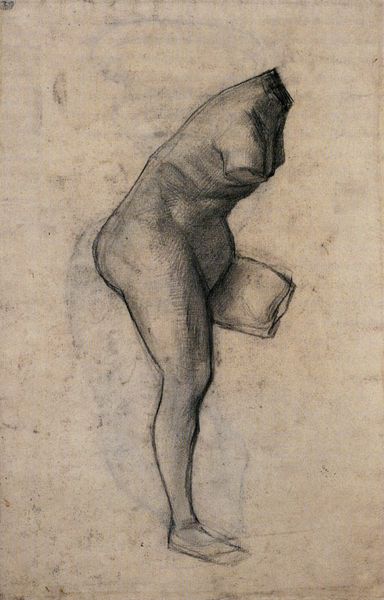
drawing, paper, pencil, graphite
#
drawing
#
impressionism
#
pencil sketch
#
landscape
#
charcoal drawing
#
figuration
#
paper
#
pencil drawing
#
detailed observational sketch
#
pencil
#
graphite
#
academic-art
#
nude
#
male-nude
Copyright: Public domain
Curator: Looking at this study by Van Gogh titled "Idol and Sketches of Venus," dating from 1886, several quickly rendered figures emerge from a light ground. The piece uses pencil and graphite on paper and it currently resides at the Van Gogh Museum in Amsterdam. What's your immediate take on it? Editor: Raw energy! The composition feels almost frantic, like he’s chasing something fleeting. There’s a stark vulnerability, like the figures were captured on paper not as themselves but as quick sketches. Curator: Yes, there's a vulnerability in his studies of the nude. Here, the figure's turned back invokes a classical, almost stoic posture, yet it’s offset by other forms suggestive of Venus, who represents love and desire. Editor: Love and desire fighting against a closed off or withheld emotional energy? This piece feels more like wrestling with self perception than anything else, or even societal expectation of what a body, especially Venus, should look like. It’s quite subversive for its time! Curator: It definitely plays on these classical notions and disrupts them simultaneously. This piece almost seems like a meditation on idealized form versus perceived reality and is also a window into Van Gogh’s early academic pursuits in Paris, attempting a classical mode. Notice the artist's detailed rendering of anatomy. Do you see how the shading communicates more than just form, hinting at shadow, but also anxiety or emotional heaviness? Editor: It’s less about capturing light and more about expressing the weight of something intangible, isn't it? You can almost see Van Gogh pushing against the rigid constraints of academic art. Those rapid lines almost scream "freedom!" And it’s interesting that he merges his sketch with a study of an idealized object - almost fighting those ideas out. The goddess form, and his interpretation of the "Idol," makes the old ways clash with something new and personal. Curator: That push and pull is evident throughout his career, making his interpretations so much richer than if he'd followed the prescribed path. What I find most engaging is his ability to capture a universal sense of tension. We can still connect with it, can’t we? Editor: Absolutely! You are drawn into the intimate act of creation. It reminds me that even the greatest masters struggle and evolve, always searching. Thank you for highlighting the history and artistic growth that makes this particular work speak to me today.
Comments
No comments
Be the first to comment and join the conversation on the ultimate creative platform.
